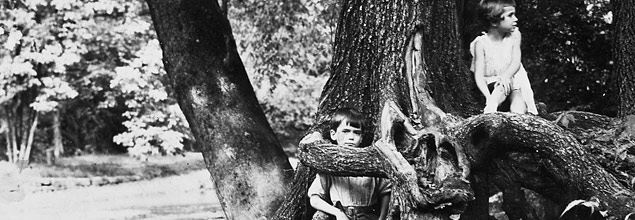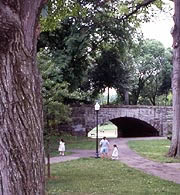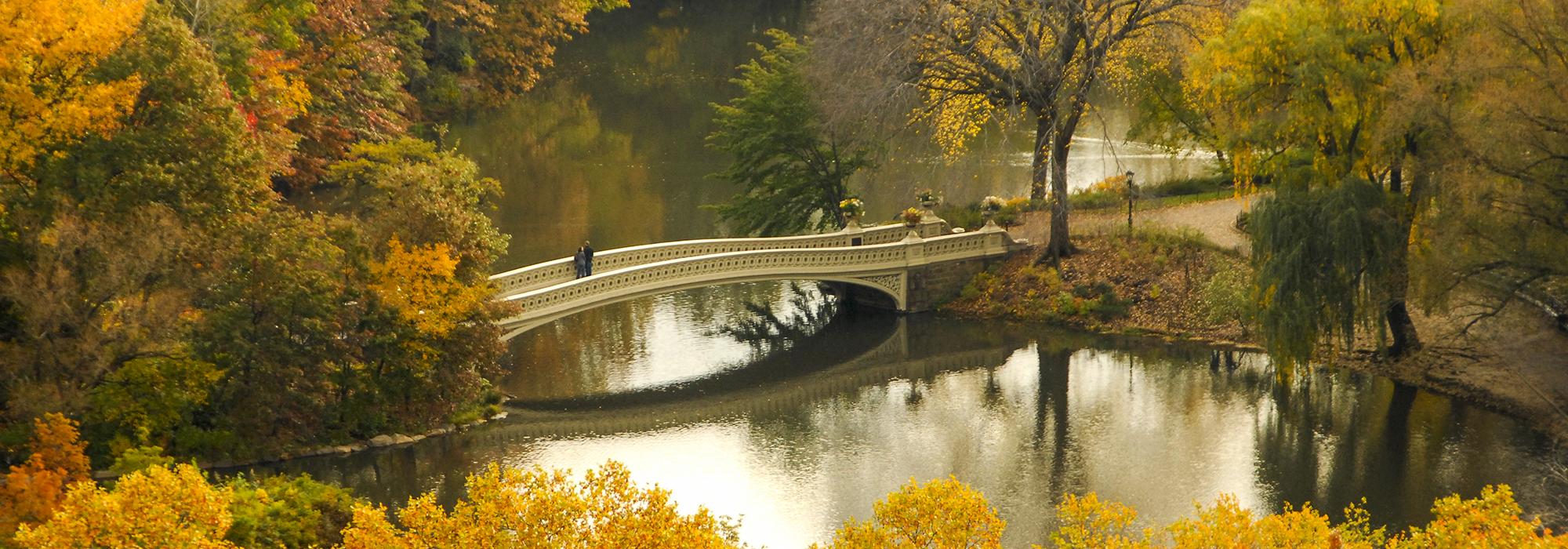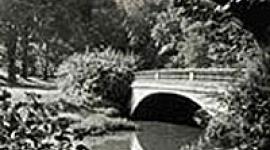The Olmsted Odyssey

Americans have a long history of creating supplemental interpretive devices for designed landscapes, not only to enrich the visitor experience but also to nurture an informed constituency. From the guidebooks created for Mt. Auburn and Cave Hill Cemeteries to the stereoscopic views of American Scenery that portrayed Central, Prospect and Iroquois parks, interpretation in the nineteenth century took many forms.
As a culture we have always had an interest in interpreting the designed landscape. Olmsted himself was concerned with enriching the visitor experience. In 1873, in his discussion on the use of Central Park, he stated, “ ... assistance should be given to visitors as is necessary to their profitable use of it [the park]. Those most needing assistance (in the way chiefly of directions, information and advice) will be people of home-keeping habits, retiring dispositions, helpless, sensitive, modest. The difficulty here is not in supplying all necessary advice that shall be asked, but in giving those most needing to obtain advice the confidence to ask and accept what they need.” (1)
Since Olmsted made this statement over a 125 years ago, historic designed landscapes have been represented in a variety of interpretive media: stereoscopic views, postcards, lantern slides, engravings, paintings, books, models, brochures, exhibitions, videos and documentaries.

Tyler Park
Yet, many of the designs by Olmsted and his successor firm undertaken for the city’s comprehensive system of parks, parkways, subdivisions, institutional grounds and estates here in Louisville are today invisible to many. As a result, these maps or memories need to find their way out of the attic or the archivist’s closet and back into the hearts and souls of many more. The result of this cultural amnesia is that many of the Olmsted-designed landscapes now only tell part of the story and may not be accessible to those that, as Olmsted noted, lacked the confidence to ask. In my personal reflections on the legacy today and in building on the comments made by Betsy Barlow Rogers and Arleyn Levee I present a challenge: We must strive to go beyond traditional teaching tools: text and sign panels, linear lesson plans and brochures. To the kid who is interested in Bob the Builder, Harry Potter or Peter Parker, it's snooze time!
This quest is very achievable—especially when we recognize that two-thirds of American educators today report that integrating telecommunications activities into their instruction had a positive impact in their teaching methods. For teacher teams looking for integrated curricula to bring into the classroom, the Louisville Cultural Landscapes as Classrooms (CLC) project will be both a valuable resource for ideas and a tool to explore those ideas. In this work, we must take the opportunity to educate the broadest public possible—from middle school aged kids to adults, from bikers to birders, to those interested in Dry Stone Walls or the Stone Temple Pilots (who played here in Louisville on May 1st).
In response to this opportunity the Cultural Landscape Foundation’s CLC project aims to build a bridge between nature and culture. In doing so, the CLC project melds both historic and contemporary interpretive narratives in such a way as to enrich the learning experience, elicit a response, and nurture a stewardship ethic for future generations. When I first came to visit the Olmsted parks in the mid-1980s I was dismayed at their condition. Like many other parks in many other great American cities, these landscapes were populated with a myriad of interrelated and yet often invisible ecological and historic features. For example, many of the Olmsted parks here in Louisville and elsewhere are often situated in disenfranchised communities and, as a result, were facing a dismal future— uncared for and unprotected. When considered in concert with shifting economic conditions and rapid changes in use, the unique attributes of the Olmsted designs were neglected or altered because interested constituencies from children to caretakers were focused solely on isolated domains from birds and bees to bricks and boxwoods. I now have come to learn that the opposite of love is not hate—it is neglect.
As testified by the stewardship honor recipients, Louisville’s cultural landscape is being rediscovered with renewed fervor, intensity and interest. As illustrated by the recent burning at Iroquois Park’s Burnt Knob, (which I witnessed on my last visit here on April 11th,) the Louisville Olmsted Parks Conservancy, like River Fields, has put in place a new environmental approach—a holistic one that brings to an end the segregated stewardship and interpretation of natural, scenic, and historic resources as separate management entities. Our challenge today at this Olmsted Odyssey is to find ways to educate other Louisvillians to these riches? How do we provide these visitors (both real and virtual) with the necessary tools to understand these astonishing landscapes, place a value on authenticity (or as Grady Clay would seek “Real Places”), and truly understand how the Olmsted design evolved to its present state. A colleague, Richard Rabinowitz, refers to this as “the rediscovery, the rescue, and the restoration to public awareness of many of the stories attached to a site.”
Here is our prospect: we should strive to educate the public to derive meaning about Louisville’s Olmsted landscapes—their historic themes, associations and features within broader historical, social and physical landscape contexts. In this work we should strive to make a commitment to understanding landscape features from the plant life along the Ohio River Corridor to the construction of dry stone walls. Ultimately, by understanding and classifying these features and relationships, the Louisville Olmsted legacy can be presented as a living, vital artifact, possessing evidence of evolving natural systems and human interventions over time.
Geographer Pierce Lewis recently stated, “The attempt to derive meaning from landscapes possesses overwhelming virtue. It keeps us constantly alert to the world around us, demanding that we pay attention not just to some of the things around us but to all of them—the whole visible world in all of its rich, glorious, messy, confusing, ugly, and beautiful complexity.” (2)
Perhaps this is our greatest challenge... let us go forward.
(1) Olmsted, Sr., Frederick Law. Park Keepers, Frederick Law Olmsted, Landscape Architect, 1822-1903: Forty Years of Landscape Architecture, G.P. Putnam’s Sons, New York, 1928, 458-459.
(2) Lewis, Pierce, “Common Landscapes as Historic Documents,” Lubar, Steven and Kingery, W. David (eds.), Essays on Material Culture, Smithsonian Institution Press, Washington, DC, 1993, p. 138.




